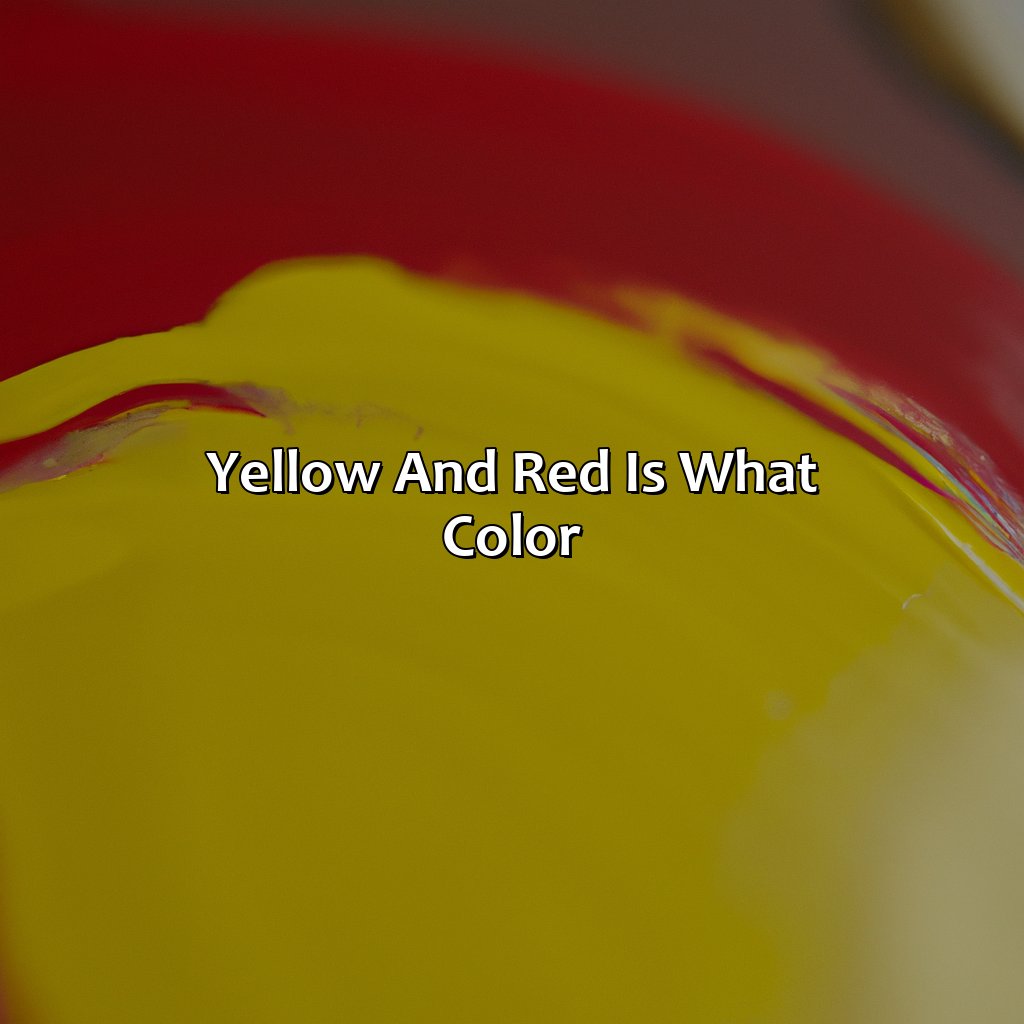Key Takeaway:
- The color of a star is indicative of its temperature and composition: Blue stars are hotter and have higher luminosity, while red stars are cooler and have lower luminosity. The chemical composition of the star can also affect its color, with metallicity playing a role in determining whether a star is blue or red.
- The color of a star can also indicate its age and size: Younger stars tend to be bluer and brighter, while older stars are cooler and redder. The size of a star can affect its absorption and emission lines, which can be analyzed through spectral analysis to determine its color.
- Studying the color of stars can have practical applications in astronomical observation, astrophysics, and cosmology: By classifying stars based on their color, astronomers can better understand the universe, including dark matter and dark energy.
What is the Color of Stars?
Stars’ colors are determined by their surface temperature, which is linked to their spectral types. The hottest stars show a blue or white color, while the coolest stars exhibit a red or orange hue. Brown dwarfs, which don’t have enough mass to sustain nuclear fusion, have a brown or magenta color.
The color of stars indicates the magnitude of their brightness and temperature. By analyzing the color spectrum of stars, astronomers can determine their chemical composition, age, and evolutionary stages. Understanding the color of stars is crucial in identifying their characteristics accurately, which is essential for further studies and exploration.
Understanding the Relationship between Color and Temperature
To comprehend the bond between color and temperature in stars, explore the different types of spectrums – blue, white, yellow, orange and red. These are categorized by their properties, such as composition, luminosity and their spot on the Hertzsprung-Russell diagram. Each sub-category will provide you with insight into these various types of stars.
Blue Stars
Blue stars are the hottest and most luminous category of stars, with temperatures ranging from 10,000 to over 28,000 Kelvin. Spectral type O and B stars belong to this category. These blue giants have a prominent place in the Hertzsprung-Russell diagram on the upper-left corner. They are also known for their short lifespan of only a few million years due to their enormous brightness that drains their fuel quickly.
In contrast, other stars such as red dwarfs have lifespans over trillions of years since they burn their fuel at a significantly lower rate than blue giants. As per scientific observations, blue giants are usually found in clusters or associations as they might be young or middle-aged members of formation groups.
According to NASA, modern-day astrophysics instrumental analysis shows O-stars as having highly intense emissions lines of helium and carbon-nitrogen-oxygen compounds. Simultaneously, B-class stars have emission lines associated with helium and silicon-magnesium oxide species.
It is incredible how studying star colors can reveal information about the universe’s expansion rate and provide insight into its past and future states. The Hertzsprung-Russell diagram can distinguish between main-sequence stars (that emit radiation) by plotting them based on color and absolute magnitude. Additionally, through analyzing eclipsing binaries – clouds that orbit each other – we can calculate individual star masses’ differences based on their spectral types simply by studying eclipses between these celestial bodies.
Overall, learning about blue stars as one of many categories enriches our knowledge base about the cosmos while creating an exciting path for our scientific minds to explore new realms alongside what we already know. Not all that glitters is gold, sometimes it’s just a white star on the main sequence.
White Stars
Another notable feature of White Stars is their relatively high metallicity, or abundance of elements other than hydrogen and helium. Compared to other main-sequence stars, they contain more heavy metals due to nuclear reactions in their cores.
A unique quality about White Stars is that they can exhibit an odd combination of white and blue colors during certain phases in their evolution, due to rapid rotation causing increased surface temperatures.
According to NASA, the closest White Star is Sirius A, also known as the Dog Star, located approximately 8.6 light-years away from Earth.
Yellow stars may be the color of sunshine, but their spectral type and presence in star clusters reveal a lot about their age and location in the universe.
Yellow Stars
Stars with a yellow color indicate that their spectral type is G. These stars are relatively cooler than blue and white stars, with temperatures ranging from 5,200 to 6,000 Kelvin. Yellow stars, also called dwarf stars or main-sequence stars, live the longest of all star types as they use up their fuel slowly.
These stars emit the majority of light in the visible spectrum: green and yellow wavelengths.
Yellow stars can be found in various regions of the galaxy and are frequently found in clusters of other star types. Studies have shown that yellow dwarf stars commonly host exoplanets because they provide a stable environment for life to flourish. Additionally, technological advancements have made it easier to study and gather information on these star clusters.
Moreover, observing yellow dwarf stars has assisted astronomers in understanding the evolution of stars by linking them to other colors and classifying them based on their chemical composition, temperature, size and age. Collecting this information has helped further research on not only our Sun but other similar sized and colored solar systems around us as well.
In order to further investigate yellow dwarf stars and to learn more about our universe as whole we suggest using low dispersion spectroscopy techniques which measure changes in color as well as conducting multi-wavelength observations such as radio telemetry or infrared photography to gather data from previously inaccessible areas of space.
Why settle for just orange juice when you could have an entire star in the same color?
Orange Stars
Orange stars refer to those with spectral type K and M, which are cooler and less massive than their white and blue counterparts. They have surface temperatures between 3,500 K to 5,200 K and exhibit a slightly reddish or orange hue. Orange stars tend to be variable in brightness due to convective processes occurring in their atmospheres. Observing the light of high-mass orange stars can help understand the interstellar medium where they reside.
It is important to note that the energy spectra of most orange stars contain strong molecular absorption bands of titanium oxide (TiO) and vanadium oxide (VO). This means that observing these spectral features can provide information on the chemical composition of these stars and their environments without measuring them directly.
A true fact – The high-mass orange star V339 Delphini was observed erupting in 2013 after it unexpectedly brightened from magnitude +9.2 to +6.8 over just two weeks, making it visible to the naked eye for several days. (Source: American Association of Variable Star Observers)
Why settle for a red star when you can have a brown, black, dwarf, giant or supergiant?
Red Stars
Red stars are celestial bodies with temperatures ranging from 2,000 to 3,500 Kelvin, further indicating a low luminosity and a high percentage of ionized metals. The color of these stars comes from cooler outer layers with relatively lower photonic energy. These cool and dim masses have an extended lifespan and are called red giant stars. Brown dwarfs, which are sub-stellar objects that cannot sustain nuclear fusion reactions due to their small sizes, also exhibit distinct red hues. Additionally, black holes can also be classified as red stars based on their emission spectra despite not emitting any light themselves.
Stars may change color over time, just like a chameleon changes color based on its surroundings, due to factors such as chemical composition, age, and size.
Other Factors Affecting the Color of Stars
Let’s explore the other factors that influence a star’s color. Chemical composition, age, and size all play a key role. We’ll investigate hydrogen, helium, metallicity, stellar evolution, radiation, absorption lines, emission lines, and spectral analysis. These are all important words to understand the color of stars.
Chemical Composition
Chemical composition in stars plays a crucial role in determining their color and other properties. Different elements, such as hydrogen, helium and various metals present in different ratios impact the amount of light that gets emitted from the surface.
A table can be used to showcase the chemical composition of stars and their impact on their color. The columns can be labeled with specific elements such as hydrogen, helium, and metallicity along with corresponding amounts. For example, a blue star may have a higher concentration of helium than a yellow star while a red star may have greater iron content.
It’s interesting to note that the chemical composition of stars changes over time. Over time, fusion reactions within them lead to the formation of heavier elements which then get expelled into space through processes like supernovas. This results in variation across generations of stars.
Historically, understanding chemical composition has been important for studying the Universe. It helps determine how various celestial bodies form and evolve over time. Additionally, it also aids scientists in assessing how planets are made since they’re formed from debris created by earlier generations of stars.
Like fine wines, stars only get better with age, emitting more radiation as they progress through stellar evolution.
Age
As stars age, their colors can change due to changes in their temperature and chemical composition. Older stars tend to have a lower temperature and emit more infrared radiation than younger stars. This can cause their color to shift towards the red end of the spectrum.
In addition to changes in temperature, other factors such as changes in chemical composition and size can also affect the color of an aging star. As a star ages, it consumes its fuel and produces heavier elements through nuclear fusion. This process can alter the chemical composition of the outer layers of the star, which can also affect its color.
A unique detail about aging stars is that they eventually run out of fuel and cool down significantly. This leads to gravitational collapse and can result in spectacular stellar events such as supernovae or black holes.
Pro Tip: By studying the colors of stars at different stages of their evolution, astronomers can gain insight into the processes that shape our universe.
The size of a star can be determined through spectral analysis, using the absorption and emission lines in its light spectrum.
Size
Size of Stars
Stars come in different sizes, and their size determines many characteristics such as their luminosity, temperature, and lifespan.
| Star Size | Description |
| Super Giant | A gigantic star with a mass greater than 8 times that of the sun. |
| Giant | A large star with a mass greater than one and less than eight times that of the sun. |
| Main Sequence | The most common type of stars that follow a specific pattern in their luminosity and temperature. |
| Dwarf | A small or medium-sized star, such as the sun; it can be characterized as either red or white depending on its age and temperature. |
Spectral analysis shows absorption lines as well as emission lines relating to different elements present in stars of various sizes.
When studying star colors, size plays a crucial role alongside other factors such as chemical composition and age. Understanding these factors helps classify stars more precisely. To accommodate for certain observed color patterns, scientists create classifications mostly dependent on mass differences between stars.
To better study different stellar formation models, researchers suggest analyzing the correlation between apparent color temperatures and estimated star masses using various telescopes. Texture classifying tools could benefit from non-linear methodologies like deep learning techniques to assist astronomers in observing detailed correlations between size profiles and measured parameters like photometric data for our Galaxy’s multi-scale structures over time.
Studying star colors isn’t just for fun – it’s essential to unlocking the mysteries of the universe through astronomical observation, astrophysics, and cosmology.
Practical Applications of Studying Star Colors
Let’s dive into the significance of stars’ colors and their classification! We’ll explore the practical applications of astronomy, astrophysics and cosmology. We’ll classify stars into ‘stellar populations’ and ‘variable stars’. That way, we can have a better understanding of the colors of stars. Then, to understand the Universe, we’ll discuss the roles of dark matter and dark energy.
Classification of Stars
Stars play a crucial role in understanding the universe. Proper classification of stars is essential to comprehend their properties and characteristics. The color of stars plays an important role in classifying them.
| Star Type | Description | Example |
| Main Sequence Star | Average Star, shines by converting hydrogen into helium in its core. | Sun (G2V) |
| Red Giant Star | Giant star that has low surface temperature but large radius. | Arcturus (K1.5 III) |
| White Dwarf Star | An extremely dense small star, created after certain massive stars exhaust their energy source. | Sirius B (DA2) |
| Variable Stars | A type of star whose brightness changes over time due to various external factors such as pulsation or eclipses with other celestial bodies. | Beta Cephei (BSC4V) |
The main sequence stars are classified further based on their color and temperature. Different types of stars have unique colors that help researchers identify them quickly.
Pro Tip: Studying stellar populations and variable stars can lead to new insights about our galaxy’s evolution and formation.
Exploring the mysteries of the universe requires understanding the elusive nature of dark matter and dark energy.
Understanding the Universe
The study of star colors has been essential in gaining insight into the universe. Scientists classify stars based on their color, temperature, age, chemical composition and size. Through this classification works, astrophysicists can gain a holistic understanding of our galaxy’s language. Additionally, knowledge gained through star colors can enable scientists to make inferences related to dark matter and dark energy interactions. The understanding of these elusive forces allows in providing a deeper comprehension about the cosmos while offering clues to the origins of life itself. The colours help astrophysicists understand what processes are occurring within stars at any given point in time and how they will evolve later on. While researching star colors may seem niche it plays an important role for understanding more significant elements impacting our universe than just the stars themselves.
Five Facts About Stars and Their Colors:
- ✅ Stars are identified by their color, which corresponds to their surface temperature. (Source: NASA)
- ✅ The color of a star can range from red (coolest) to blue (hottest). (Source: Space.com)
- ✅ Blue stars are typically large and young, while red stars are smaller and older. (Source: Universe Today)
- ✅ Yellow stars, like our Sun, are intermediate in temperature and size. (Source: National Geographic)
- ✅ The color of a star can also indicate its chemical composition, such as whether it contains a lot of helium or heavy elements. (Source: Live Science)
FAQs about Stars Are Identified By Their Color; What Does The Color Indicate?
How are stars identified by their color?
Stars are identified by their color through a process called spectroscopy. Astronomers analyze the spectrum of light emitted by a star to determine its color and other properties.
What does a star’s color indicate?
A star’s color indicates its temperature and age. Blue and white stars are hotter and younger, while red and orange stars are cooler and older.
Why are blue stars hotter than red stars?
Blue stars are hotter than red stars because their surface temperature is higher. This means they emit more energy in the form of radiation, which makes them brighter and bluer in color.
Can a star’s color change?
A star’s color can change over time. This can happen if the star’s temperature changes or if it begins to run out of fuel and starts to evolve into a different type of star.
What is the main factor that determines a star’s color?
The main factor that determines a star’s color is its temperature. Hotter stars appear blue or white, while cooler stars appear reddish or orange.
What else can astronomers learn from a star’s spectrum?
Astronomers can learn many things from a star’s spectrum, including its chemical composition, distance from Earth, and motion through space.





